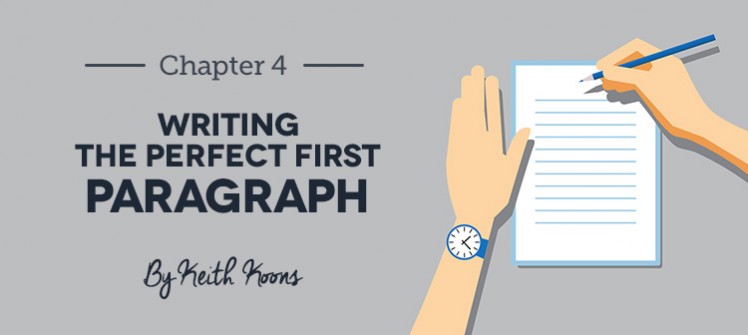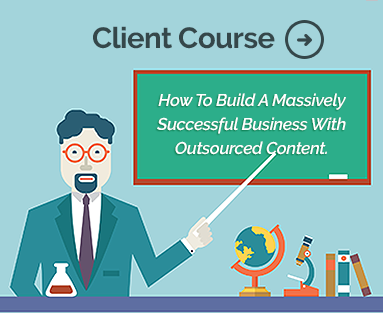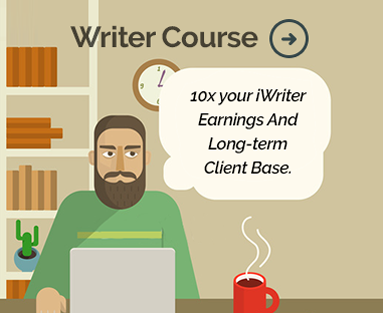Have you ever heard the term “elevator pitch” before?
That’s a phrase that entrepreneurs use to describe a short statement they prepare to impress potential investors. The premise behind the phrase is that you run into someone who could completely change the course of your life for the better, but you’re only going to have about 20-30 seconds to completely wow them. Think of it like running into a celebrity or an influential CEO on an elevator ride.
So you give that person your best “elevator pitch” to capture their attention. And since it’s usually a once in a lifetime opportunity, you make every word count to ensure your highest chance of success.
Now know this- every time you write an opening paragraph for one of your clients, it should be an elevator pitch.
What do I mean by that?
The very first sentence should take your reader by surprise and draw them in. Then the next few lines should establish you as a thought leader on the subject, so there’s no doubt that they have come to the right place for information. And then you should wrap the first paragraph up with a preview of what’s to come…all the while ensuring that your reader will want more.
Got it? Let’s try a practical example. I grabbed this straight off the iWriter Elite Plus category.
Title – SEO and the Bottom Line: Why SEO is Essential for Business
If you remember our earlier lessons, the first thing I want to do here is figure out why the client wants me to write this topic. And that’s pretty easy; he’s likely an SEO company that is looking for more business. So my “real job” here is to sell the idea that SEO is essential for any business.
That also means that I am targeting business owners and people making purchasing decisions about their websites- because that’s who ultimately buys SEO. With that in mind, the next step is to ask myself, “What do business owners really care about when it comes to search optimization?”
- They care about getting more visitors
- They care about more leads and sales
- They care about their website’s appeal
- They care about making more money
On the other hand, I also have to remember that most business owners and executives have very little idea how SEO really works, and the chances are pretty good that they’ve been burned by other search optimization companies in the past. Unfortunately, that’s just how that industry works…there are a lot of companies out there that make promises and can’t deliver. So building trust right off the bat is definitely my top priority with this topic.
Now, I chose this topic because I work in the SEO field and I’m already very knowledgeable about the subject.
That’s the only reason we skipped over doing our actual homework here and I gave you the answers we would usually have to figure out by searching the net-
- Why does the client want this topic on his site?
- Who is his ideal customer or reader?
- What do his customers want to know about for that keyword?
- How can I deliver that information in an engaging way?
If it was a topic like “Building a Retaining Wall” or “The Best Treatments for Poison Ivy”, then I’d have to do the actual research above to know how to write the article. Don’t worry though; we will cover those steps in a lot more detail in chapter six. Let’s give that first paragraph a try –
“In the United States, over 86% of all consumers perform a local search on their smartphones before making a purchase in retail stores. So if your business lacks a properly optimized website, there’s a very good chance that even your best customers are finding other places to shop. That’s why SEO is essential for any business in the modern world; it is the only way to ensure that new customers can find and embrace your brand.”
As you can see, I started the paragraph with a powerful statistic. It tells the reader something that their customers are currently doing right now inside their retail stores, which makes it almost impossible for them to stop reading at that point. They have to know more…so they move onto the 2nd sentence.
Since I already had a strong hook to capture the reader’s attention, my second sentence should be a direct extension of the first. But at the same time, I also made it more personal by using the phrases “your business” and “your best customers”. This lets me speak directly to the reader and draw them in even further.
In other words, it engages them. It makes them feel important and validated.
In this instance, I also had a very specific long tail keyword to fit into the copy- “Why SEO is essential for business.” So instead of dragging the first paragraph out any further, I took my opportunity in the third sentence to get the main phrase in there while setting up the rest of the article.
Now, you may wonder- “Why didn’t you add a fourth sentence or a little more detail? Isn’t three sentences kind of short for a first paragraph?”
There’s no set answer for the amount of content in the intro. My only goal is to hook the reader so he/she will read the entire article, and I’ll do whatever it takes. If I needed six sentences, then that’s how many I would have written. But if I can accomplish the task in three, then I definitely don’t want to add anything extra to break the flow.
Why?
Think about it for a moment…and forget about things like keywords, word counts and even basic grammar. I can’t stress that enough; your only goal is to impress your readers with quality content. That’s always your number one priority no matter what kind of assignment it is, and if you don’t accomplish that in the first paragraph…then nobody will even bother to read the rest of the article.
That’s why your first paragraph needs to be perfect from a consumer’s standpoint. There shouldn’t be any fluff, unnecessary facts, and/or general promises…just good clean page copy to create interest.
Let me make one final point before we wrap up this chapter.
By now you’ve heard a good part of my personal story about how I became a professional writer. And because of the way I’ve written this series, you probably feel like you are already starting to get to know me fairly well.
In some ways, we’ve already built up quite a strong relationship together.
The way I’m speaking to you right now is a choice…because I want this tutorial to feel very personal. That’s what allowed us to establish a connection in the first place, and that is an absolutely vital skill for you to learn. The more you can make your readers feel like they know you (or the brand you’re writing for), the better the information you’re sharing will be received.
So always make your writing feel very personal- even if you’re writing for the New York Times and ten million daily readers. It doesn’t really matter because your job is to connect with each of them as individuals, not as a group of people.
Sincerely-
Keith Koons


 Previous Lesson
Previous Lesson



It’s awesome to know this.
I’m learning a lot
I am learning a lot with this program.
This is very important message Keith thank you
This is great, am realy learning alot.
Your lessons are very valuable to me and i am confident that at the end i will become a very good writer.Final words keep!
It’s really awesome!! And teaching system and mind blowing!
Awesome!
This was very helpful for any form of article writing.It made me pause and thinking about my writing style.
Wow, this is very captivating indeed. The lesson is very catchy and educative just like the first sentence in the example above.
Big up Mr.Koons